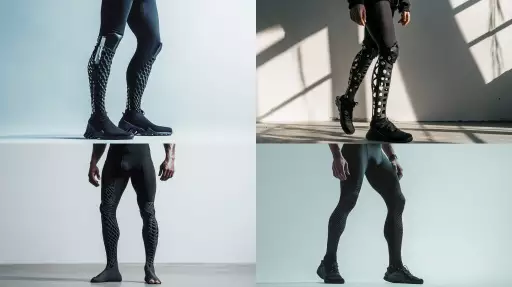Explore the Best AI Image Gallery

Where Art Meets Tech: AI Image Creation Tools and the Future of Creativity
The realm of art has always been a space of innovation and evolution. From the advent of oil paints to the digital revolution, new tools have continuously reshaped how we create and experience art. Today, we stand on the precipice of another monumental shift: the rise of AI image creation tools. These powerful algorithms are capable of generating stunningly realistic and imaginative images from simple text prompts, blurring the lines between human and machine creativity.
A New Era of Creative Possibilities
AI image creation tools offer a plethora of exciting possibilities for artists, designers, and anyone with a creative spark.
- Streamlining Design Processes: Imagine generating multiple design variations for logos, websites, or even fashion collections in seconds, freeing up valuable time for artists to focus on conceptualization and refinement.
- Democratizing Art Creation: These tools can empower individuals with limited artistic skills to bring their ideas to life visually, fostering greater inclusivity and accessibility in the creative process.
- Exploring New Artistic Frontiers: AI can be used to create entirely new forms of art, pushing the boundaries of imagination and challenging conventional notions of creativity.
Applications Across Industries
The impact of AI image creation extends far beyond traditional art forms. Here are just a few examples:
- Advertising and Marketing: Generate captivating visuals for campaigns, product mockups, and social media content.
- Education and Research: Create interactive learning materials, visualize complex data sets, and accelerate scientific discovery.
- Entertainment and Gaming: Design immersive game environments, create realistic character models, and bring stories to life in new and innovative ways.
Ethical Considerations
While the potential benefits of AI image creation are undeniable, it is crucial to address the ethical considerations that accompany this technology:
- Copyright and Ownership: Who owns the rights to AI-generated images? Establishing clear legal frameworks is essential.
- Bias and Representation: AI algorithms can inherit biases present in the data they are trained on, potentially leading to unfair or discriminatory outcomes.
- Misinformation and Deepfakes: The ability to create realistic synthetic media raises concerns about the spread of misinformation and the potential for manipulation.
Shaping the Future of Creativity
AI image creation tools are poised to revolutionize the creative industry. As this technology continues to evolve, it is essential to foster open dialogue, establish ethical guidelines, and ensure that AI serves as a tool to empower human creativity rather than replace it. The future of art lies in a harmonious collaboration between human ingenuity and artificial intelligence.
By embracing responsible development and harnessing the power of AI ethically, we can unlock a new era of creative possibilities and shape a future where technology and art converge to inspire and enrich our world.
](https://images.ai-img.art/thumbnails/150/157712d76865d557120f9baf988de3d0525225295a2789c89bf2c4a5a96a03d1.webp)




![**Representation: A teenager smiling while thinking about a friendly dog, a comic-style thought bubble with a friendly dog inside. Graphic style: Line drawing, cartoon style, influenced by Franco-Belgian comics, thick black lines, simplified design, vector, black and white only, in the style of Keith Haring or the French comic strip "Alinéa". [IMPORTANT]: A single continuous line extending from one side of the image to the other, minimalist, strong outlines, line drawing, without lifting the hand, ultra-simplified, no shading, entirely white image, drawing created in the center of a sheet of paper. --ar 16:5** - <@627984126871470085> (fast)](https://images.ai-img.art/thumbnails/150/6fc850f638e3dee0c4b121acecad2c8419e02bdeac7f871d625f1003c1c3abe1.webp)










![**Representation: A dog acting as a private tutor to a child. The dog holds a ruler in its paw and stands at the blackboard to explain a dog diagram to the child. Graphic style: Line drawing, cartoon style, influenced by Franco-Belgian comics, thick black lines, simplified design, vector, black and white only, in the style of Keith Haring or the French comic strip "Alinéa". [IMPORTANT]: A single continuous line extending from one side of the image to the other, minimalist, strong outlines, line drawing, without lifting the hand, ultra-simplified, no shading, entirely white image, drawing created in the center of a sheet of paper. --ar 16:5** - <@627984126871470085> (fast)](https://images.ai-img.art/thumbnails/150/7a854648a81e51241dcca8d24dd6e3bfcf07ad1df51baf401c9b729f4cf411fa.webp)







](https://images.ai-img.art/thumbnails/150/51c93500396faff4e7fa8b42bc68033067b16b2230e3496e95c482a581ff0fe9.webp)








![**Representation: A dog acting as a private tutor to a child. The dog holds a ruler in its paw and stands at the blackboard to explain a dog diagram to the child. Graphic style: Line drawing, cartoon style, influenced by Franco-Belgian comics, thick black lines, simplified design, vector, black and white only, in the style of Keith Haring or the French comic strip "Alinéa". [IMPORTANT]: A single continuous line extending from one side of the image to the other, minimalist, strong outlines, line drawing, without lifting the hand, ultra-simplified, no shading, entirely white image, drawing created in the center of a sheet of paper. --ar 16:5** - Variations (Strong) by <@627984126871470085> (fast)](https://images.ai-img.art/thumbnails/150/f4e034998ccd869d8a061fd12017514fcd92210eb33d4222dc9b54716223f4dd.webp)








](https://images.ai-img.art/thumbnails/150/9d51c5e673b4f2068b7b01abc35425a06f173b76303adf9ad29ca14302c25b18.webp)

